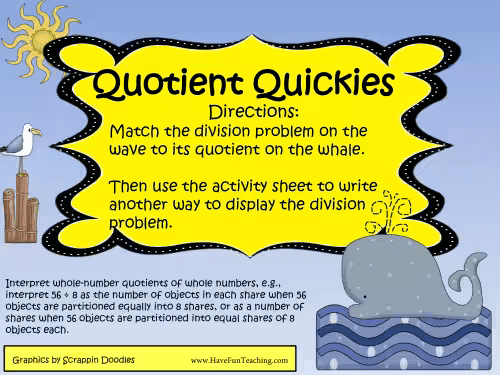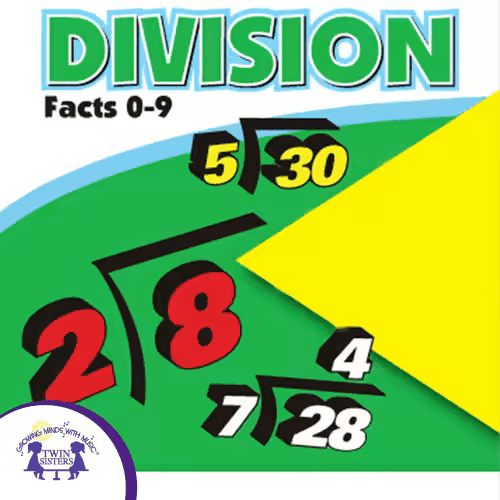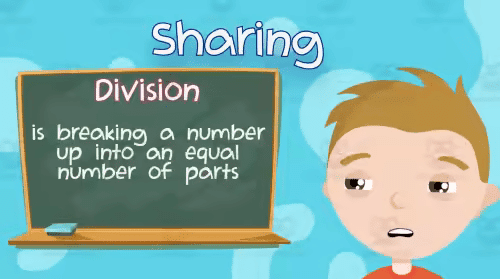Many teachers lack confidence in Math and do their best not to let it show. It stems from our own school days where we may have had a bad experience or a teacher that didn’t quite establish foundations before moving on. Fast forward to your teaching career. You may find yourself in a situation where you teach across the curriculum and can’t avoid it. The important thing is to break the cycle and ensure you instill confidence and a love of math in your students. Sometimes you must fake it to make it. Still, the upside is that you learn as you go and solidify a reference for your student’s understanding of the concepts you cover.
Anchor Charts are your best friend when introducing and reinforcing concepts. They are a key component in elementary classrooms and can be used for all subjects, not just math.
Math anchor charts are frequently used in the classroom to help students become independent and self-reliant. The two most common math anchor charts are process anchor charts and procedure anchor charts.
Process anchor charts guide students through a process. These might include the core concept and vocabulary.
Strategy anchor charts help students develop strategic behaviors. For instance, a strategy chart for a division might offer a variety of methods for solving division problems or focus on one approach.
There are several ways to format anchor charts, but they are critical teaching and learning tools.
Table of Contents
- Elements of a Division Anchor Chart
- Different ways to use anchor charts to teach division
- Division resources from Teach Simple
- Other Division Resources
Elements of a Division Anchor Chart
An anchor chart is a visual representation of key concepts or strategies that can be referenced repeatedly. They are instrumental in maths, where new ideas are frequently introduced, as it may be challenging to remember them all. So what factors should you consider when creating or finding an effective anchor chart to help you?
Keep It Simple
You might have all these complicated concepts in your head, but not all students are alike. Some students might have a different learning style; others might have a different level of understanding. When you’re teaching, keep it simple so everyone can understand. You don’t want to overburden your students, or you risk confusing them. Also, keep your expectations reasonable. If you expect your students to know everything on the first day, you’re setting them up for failure. Instead, start with the basics. Teach them the terms, the underlying concept, and the most simple and easy-to-understand examples. Once they grasp the basics of division, then you can advance to more complicated concepts.
Make it Visual
An anchor chart can’t just be copious amounts of written notes that swarm a page. Many students are visual thinkers, and pairing a written explanation with a visual representation always makes it easier to grasp. It’s also important to know your audience. For example, a high schooler won’t appreciate cartoonish design as much as a kindergartener.
Avoid overkill
You want your anchor chart to look pleasant, but it can be distracting if you go overboard and add too many details. The goal is to make an anchor chart easy to use and skimmable.
Make copies for your student
Having an anchor chart on display in your classroom is an excellent reference; students can refer to them as they work. But they can also be a perfect tool for studying at home. Create copies for your students to paste into their workbooks, so they can always access them.
Show different strategies
If you’re teaching the same way every time, your students will get bored and lose interest. Instead, they need to learn new ways of solving problems, connecting concepts, and applying new knowledge. For example, you as a teacher can ask your students to group the problems differently and solve them with different methods.
Involve your students
Teaching is not just about you standing in front of the class and lecturing them on a particular topic. It’s about engaging your students and making them a part of the lesson. So leave empty spaces on your anchor chart, build it with your students, and let them fill it out with definitions, examples, and step-by-step instructions.
Add in some self-check questions
An anchor chart isn’t just one thing. It’s a visual summary of key information, so you should look beyond the visual aspect. You should also include self-evaluation questions. Self-evaluation questions are crucial to ensuring that your students are interested in the information in the anchor chart. They allow students to make the connection between what is displayed on the anchor chart and their own knowledge. These questions can be written on the board above the long division anchor chart, printed on flashcards, or integrated into the design. You can also write down the questions on sticky notes and position them on the board. If you decide to write the questions down, have them on hand during your lesson. When you have the questions on hand, you can discuss their relevance and then have them place them on the anchor chart. In addition, interactive lessons are always more engaging.
Make it a habit
Creating an effective anchor chart requires students to review their anchor charts regularly. You cannot expect students to remember and apply their information if you post an anchor chart on the first day of school. It takes time for students to absorb and retain the information in the anchor chart, but you can assist them in acquiring fluency by making it a routine.
Different ways to use anchor charts to teach division
Start early
It is good to discover division immediately after mastering addition and subtraction and, at the same time as multiplication. Division is a fundamental mathematical operation used frequently in daily life and based on addition and subtraction concepts. Because it can be complex for some students to grasp, it is important to introduce it early, so students have ample time to master it.
Teach the vocabulary
Students unfamiliar with mathematical terminology have difficulty applying it to real-world scenarios. Recognizing the examples of the term and using it appropriately are connected.
Be strategic
Teaching a variety of division strategies is beneficial for students because it helps them understand division better and find different ways to solve problems. It also helps them develop their confidence, as they have multiple methods to use if they ever encounter a challenging problem. Finally, teaching various methods enables them to become more adaptable thinkers as they learn to adapt their strategies to different situations.
Factors, primes, and composites are crucial
Understanding factorization, prime and composite numbers are part and parcel of the broader understanding of division. Too often, it is taught much later but should be introduced early to make it organic.
Mnemonics make memories
A mnemonic can help students remember the steps for long division.
Division resources from Teach Simple
Multiplication and Division Anchor Chart by Teachers R Us Homeschool
This comes with everything you need to develop this math anchor chart with your students.


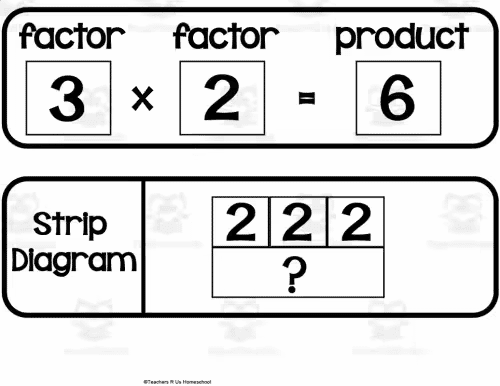
What is division? 2-Sided Flip Book By Life Beyond the Gradebook
This printable and digital file is broken up into 5 categories:
- What is Division?
- Division as Arrays
- Division as Arrays
- Division as Repeated Subtraction
- Division as the Opposite of Multiplication
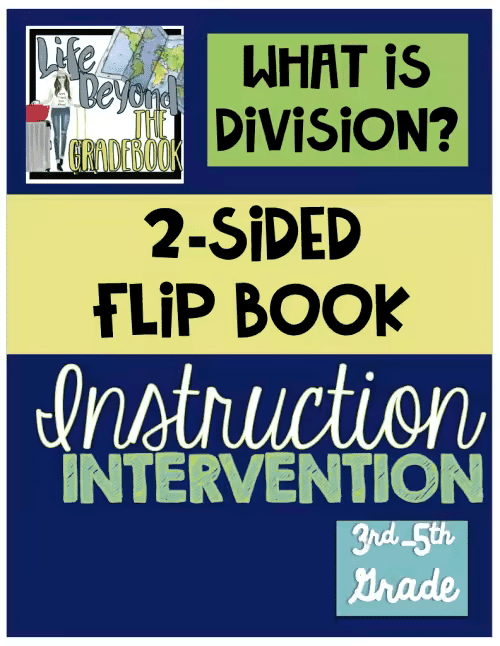


Division Strategy Cards By Rathgeber Resources
Each page has two different cards, making the perfect reference guide for your math students. These cards teach about square numbers, a number divided by itself, and much more.
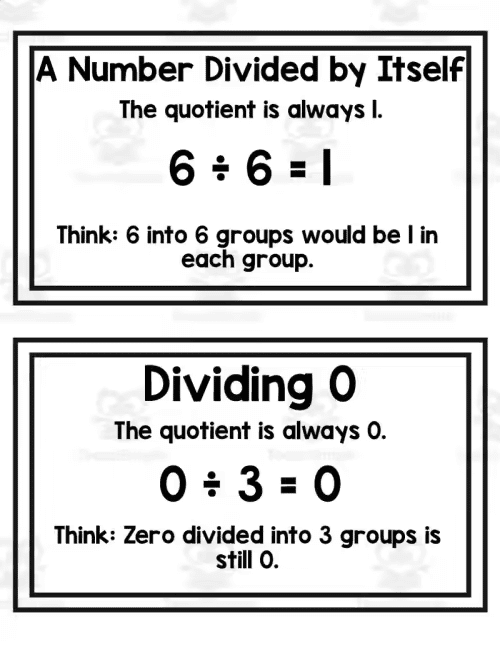
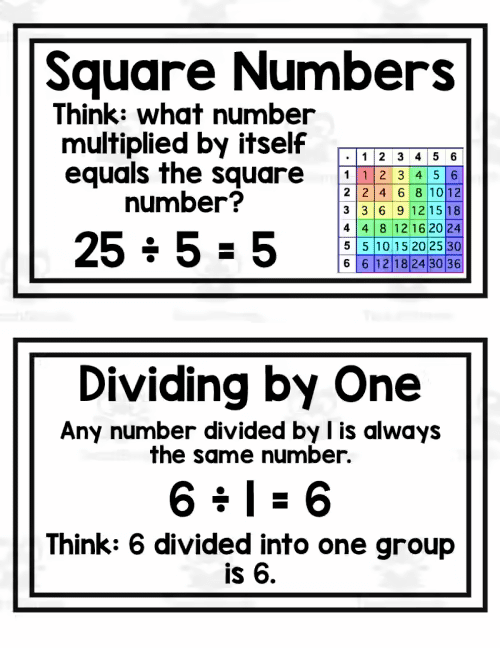
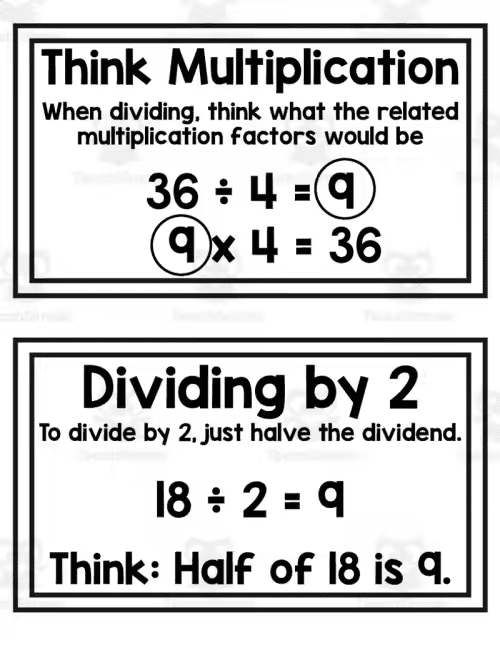
Swiss Cross Math Posters By SchoolingSara
This is a set of simple math vocabulary posters/cards. There are over 180 unique posters that cover a variety of concepts, including division.
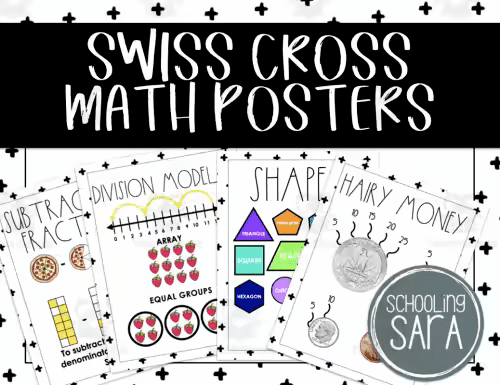
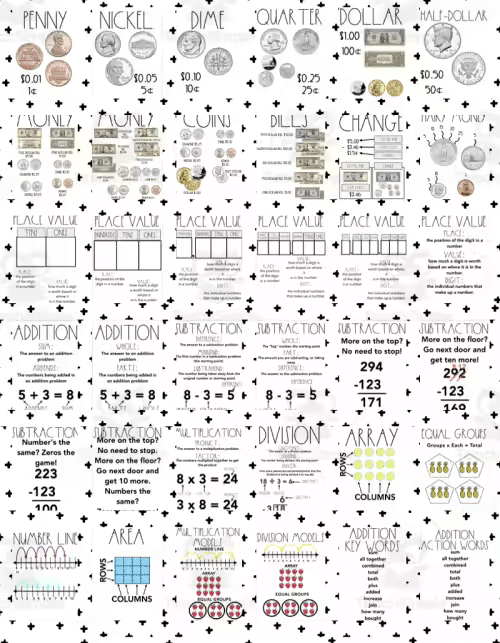
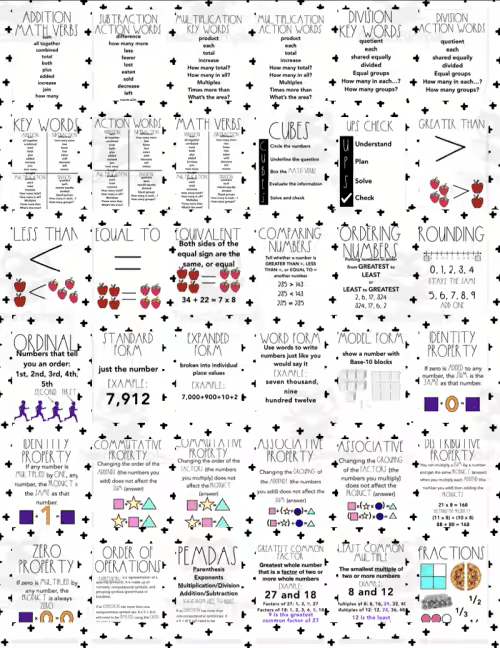
Quotient Quickies Division Activity By Have Fun Teaching
Students match the problem to the quotient. A fun, visual activity for early grades.
Division Review Printable Workbook By Twin Sisters Digital Media
This grade 3 workbook includes activities for learning and practicing multiplication and division facts to 9, multiplying and dividing numbers with two digits, and understanding and solving word division problems.
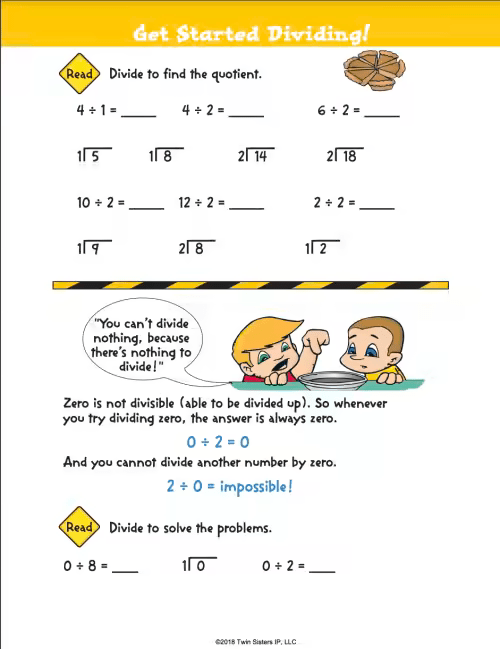
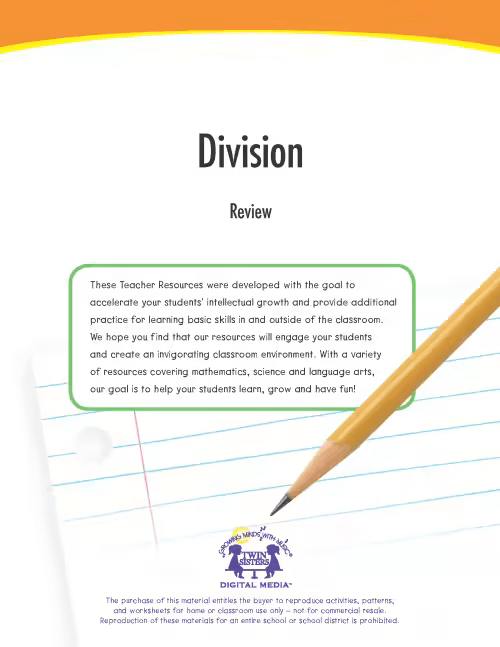
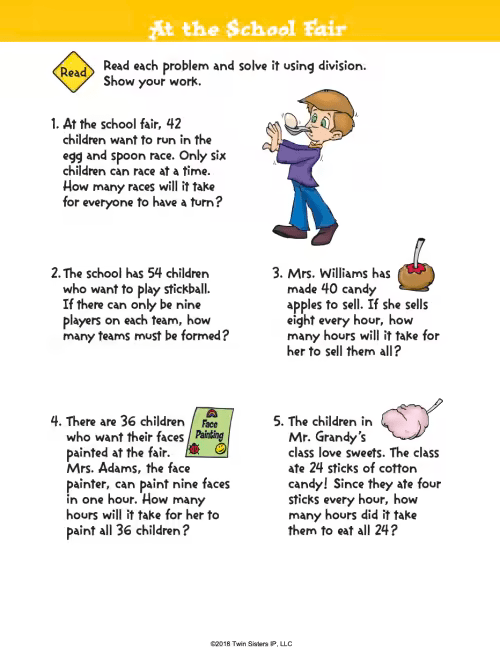
Division 101: A Comprehensive Student’s Guide to Division By Easy As ABC
This guide is designed to support the challenges students often face when learning about division, whether the division of whole numbers or the division of numbers that are less than 1 whole (fractions).
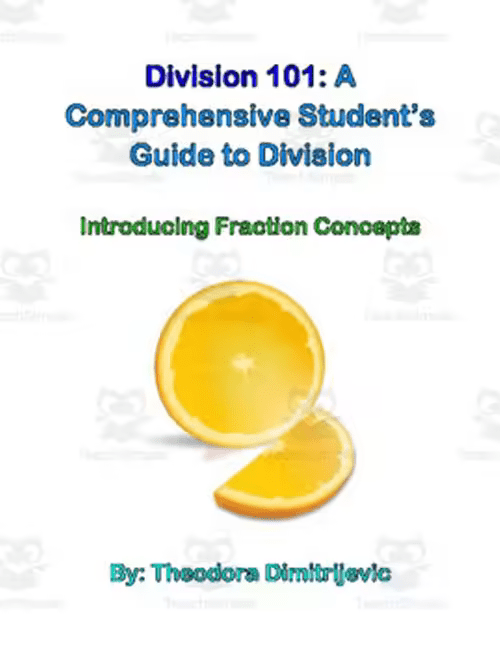
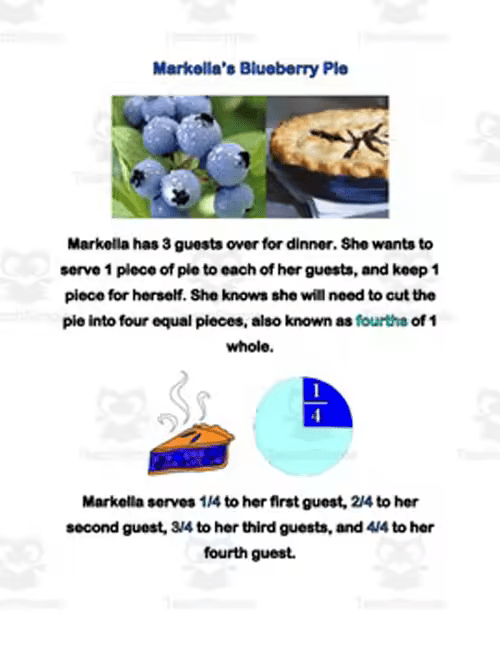
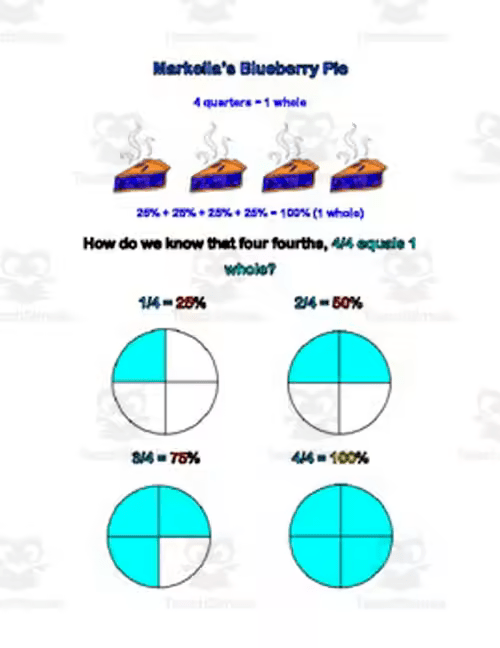
Rap With The Facts – DIVISION Songs
Make learning division cool and fun with these authentic rap and hip-hop-style songs. Students will drill and review quotients 2 to 9! Play this album for your class or for your kids at home!
Division & Long Division Practice Questions By
Twin Sisters Digital Media
A comprehensive pack of division and long division practice questions with answers designed to help kids ages 9-12 get to grips with all areas of division.
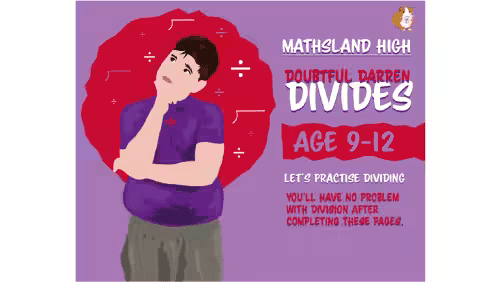
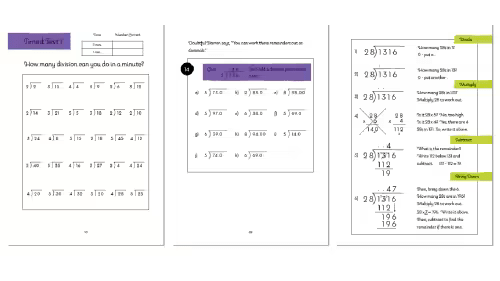
Division Coloring Pages By Dressed In Sheets
These pages will be a FUN addition to any classroom practicing their division skills. You will find pages themed for summer, spring, fall, Halloween, Christmas, unicorns, and robots.
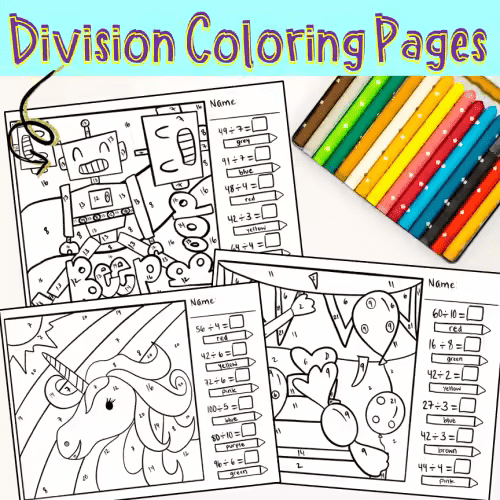
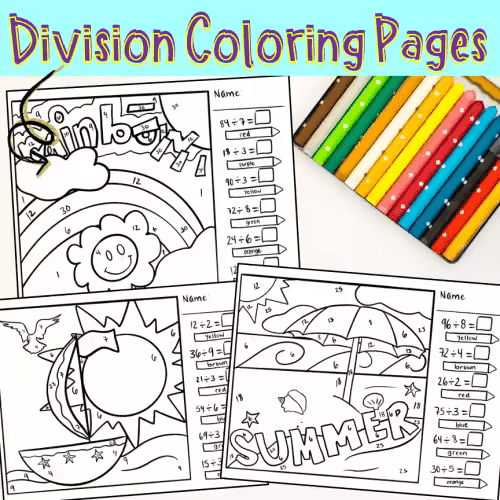
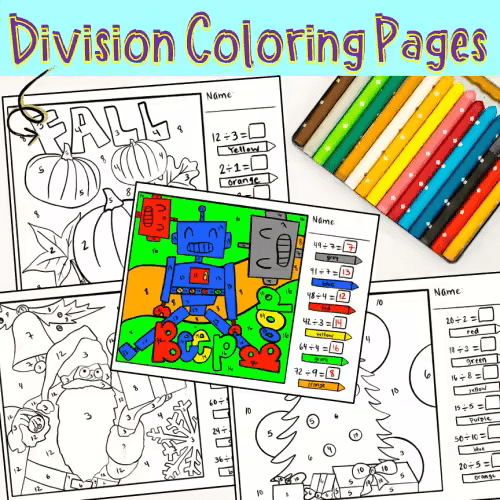
Multiplication & Division – Practice the Skill 1 – PC Software By Classroom Complete Press
This provides curriculum-based content in the form of timed drill activities.
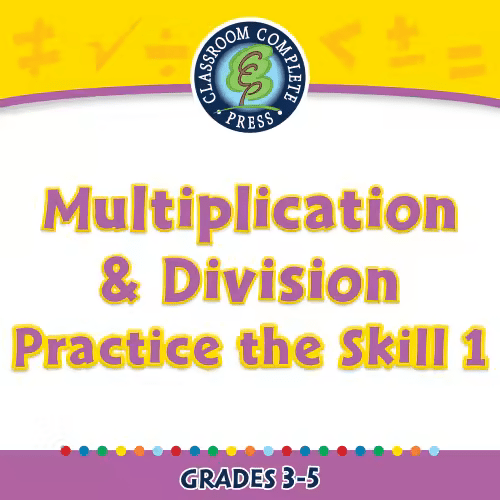
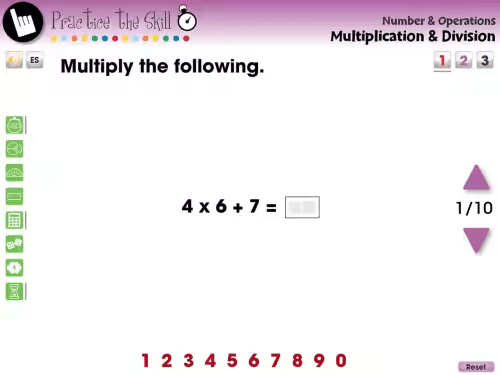
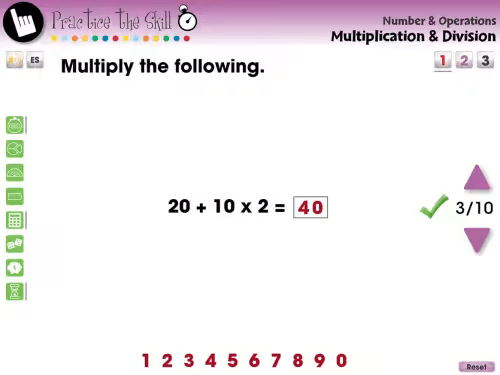
6th Grade Division With Multi-Digit Numbers Guided Notes By Teaching on the Island
This is a great packet to hand out to students during your division unit and an excellent way for students to keep track of their learning.
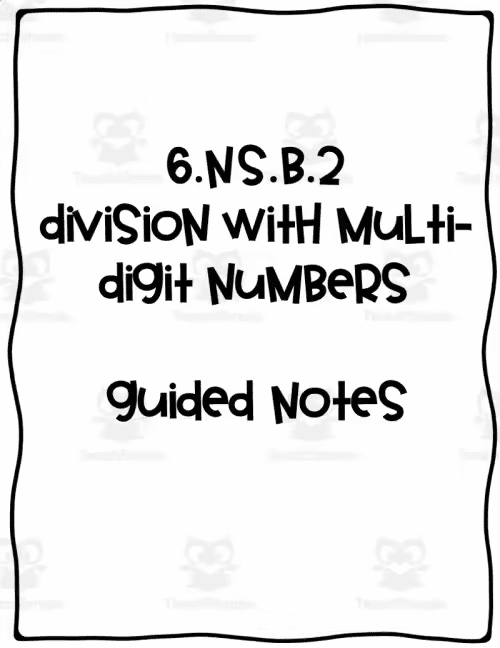
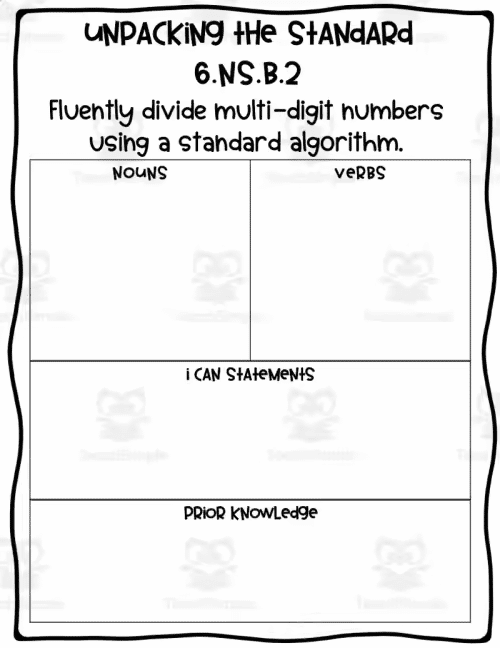
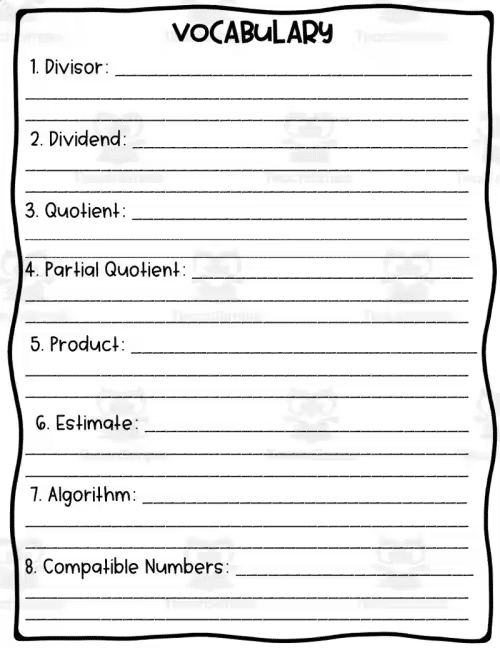
Modeling Division With Fractions “Math Lib” By Teaching On The Island
This “Math Lib” is a math activity to engage and integrate division skills.
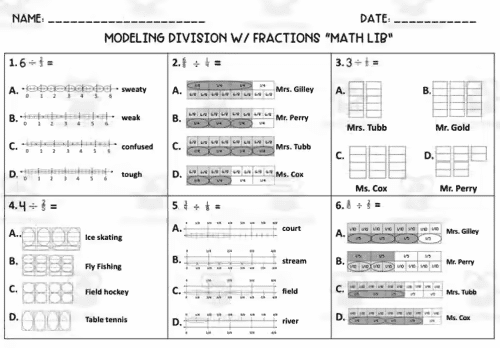
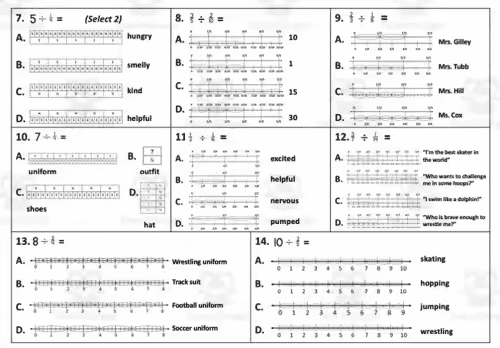
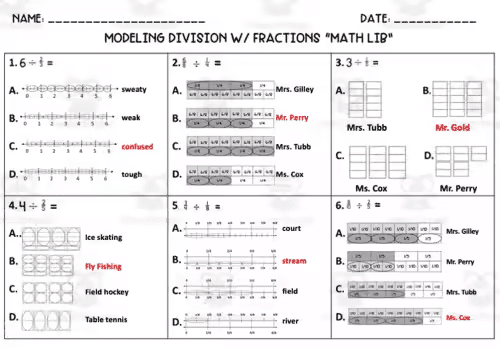
Division Jokes By Dressed In Sheets
Engage your students in critical thinking by presenting them with these fun-filled interactive math worksheets. They will have to divide to find the answer to the joke. It can be used for fast finishers, early morning routines, test prep, and more.

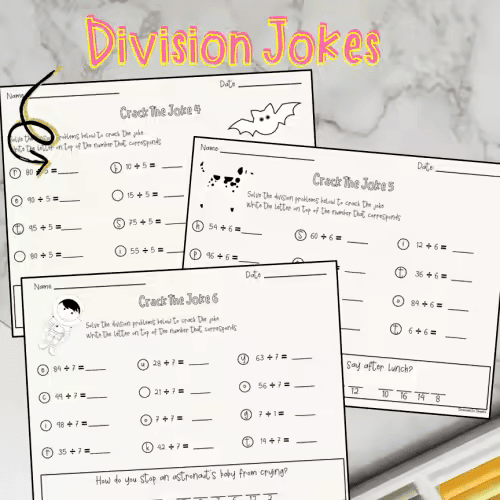
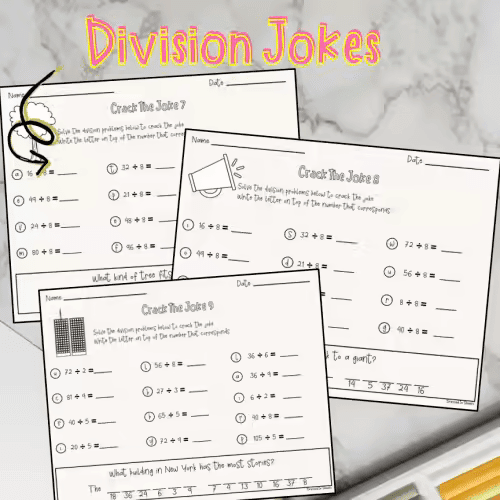
Interpreting the Remainder Booklet by Teachers R Us Homeschool
Remainders can be tricky for students to comprehend. This hands-on activity gives real-world examples and encourages critical thinking.
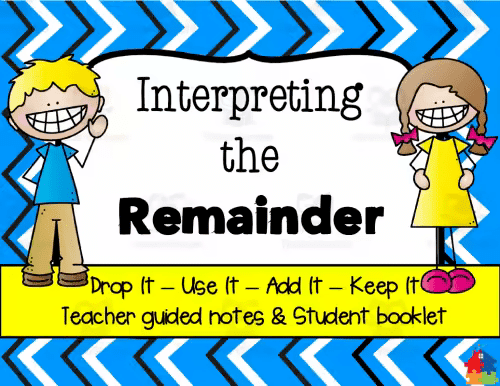
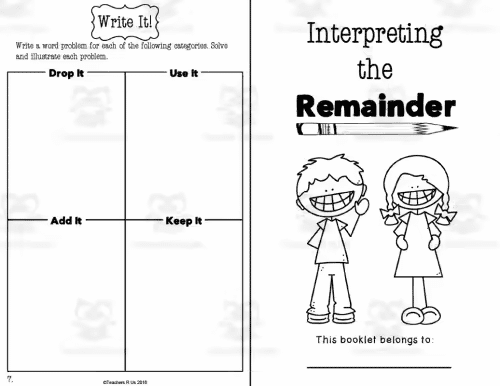
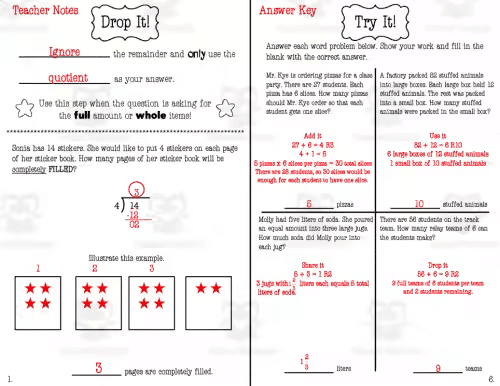
Long Division with Remainders Digital Game By Life Beyond the Gradebook
This sweet-themed long division digital math game is just what your math students need! Various game-like activities within the digital game will help your students master long division with remainders.
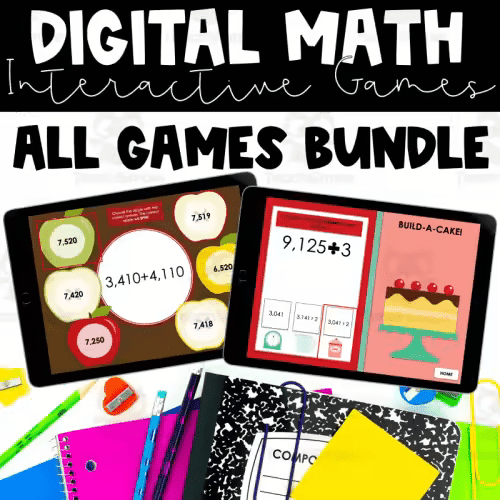
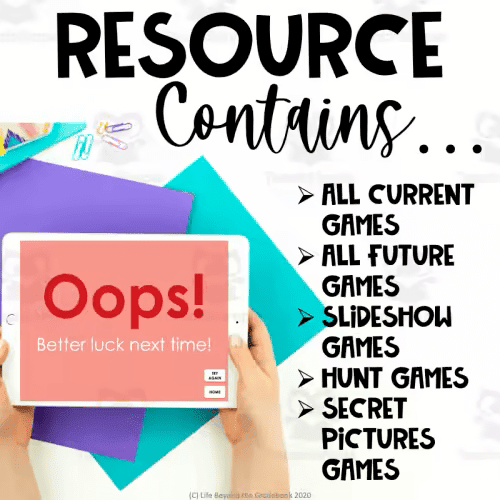
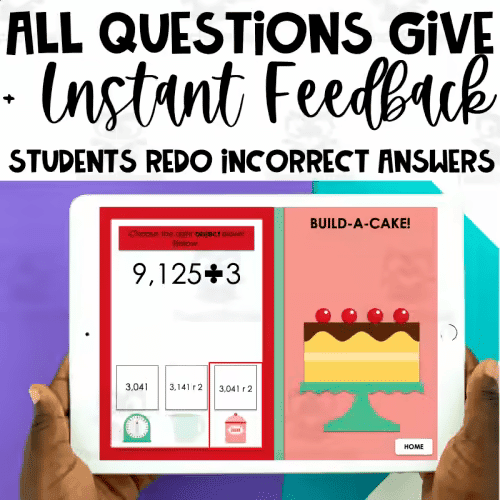
Trick or Treat Worksheets and Hands-On Activity By Quail Trail Products
They are differentiated to meet the needs of most learners and scaffolded for use as a complete lesson. Best of all, learners will participate in a hands-on learning activity to better help them understand the concept of division.
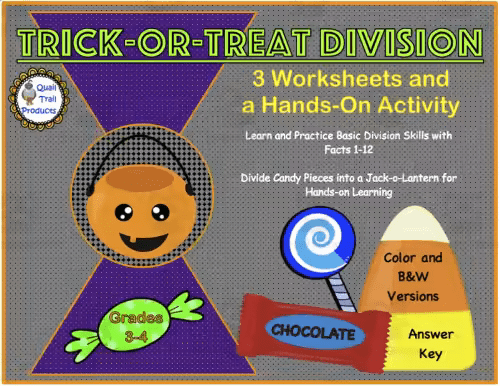
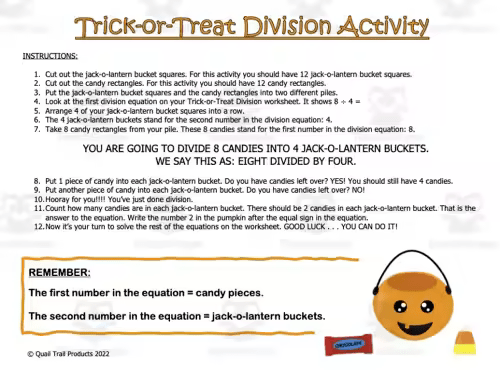
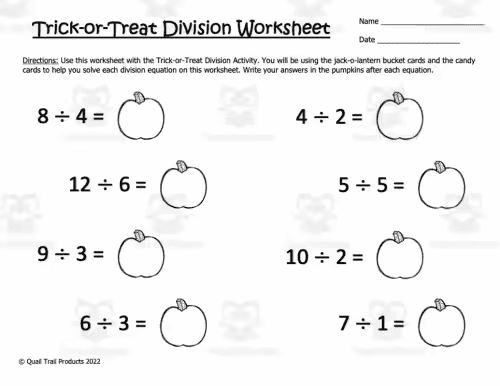
Let’s Learn Division Audio Book By Twin Sisters Digital Media
Music, rhythm, and cool melodies help students master and review division strategies. This division audiobook includes songs that teach how to make a Fact Family and consider both multiplication and division facts!
All About Division | Animated Math Video Lesson By Educational Voice
This animated math video lesson is all about division. Students will love this engaging and interactive math video that takes them step-by-step through how to sort so many different things in a fun way.
Frank N. Stein Follies and Mummy Mayhem by Knowledge Mobile
Frank N. Stein Follies and Mummy Mayhem are awesome division activities that engage and challenge students understanding of interpreting division word problems.
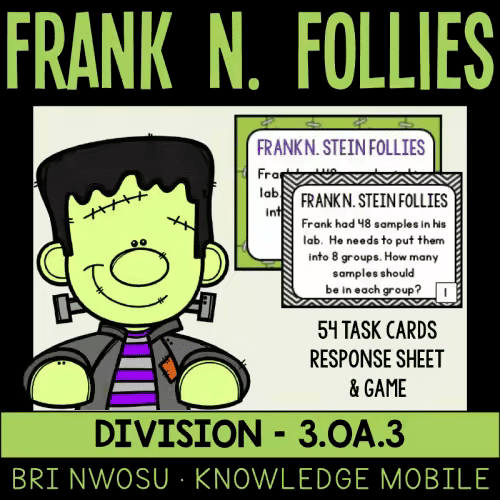

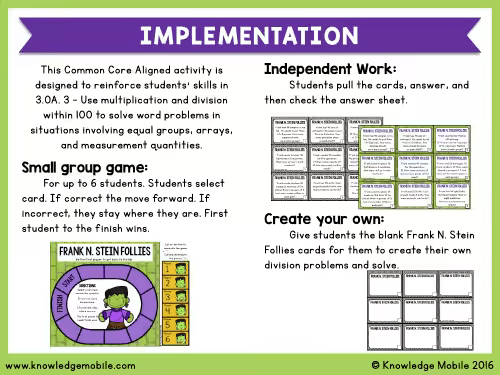
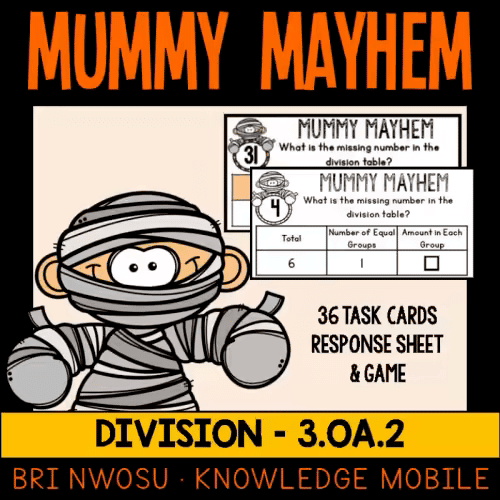
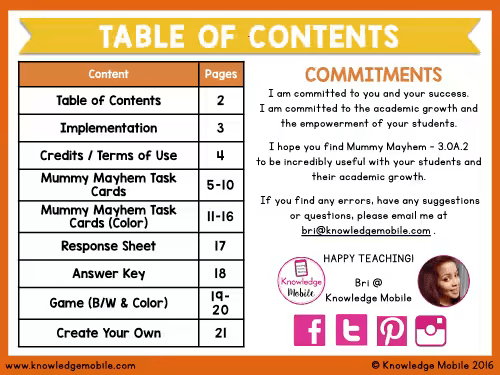
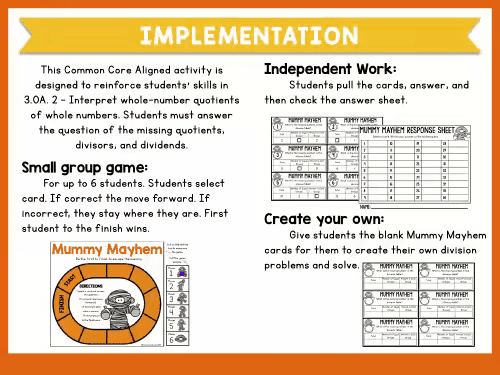
Other Division Resources
Divisibility Rules Poster By My Math Resources
This Division Poster is a must-have for any 4th, 5th, or 6th-grade classroom. This eye-catching printable poster will assist your students with division problems.
Long Division Cheat Sheet By Scaffolded Math And Science
This free long division cheat sheet includes answers with and without decimals.
Multiplication and Division Anchor Charts By Room 330 Anchor Charts
This anchor chart resource includes a basic and long division chart, which can also be printed for student math notebooks.
Division Strategies By Warker Huynh
These strategies allow students to think differently and learn to manipulate numbers in ways that make them feel like they are in control. In addition, having more than one strategy to turn to gives students the freedom to think through their problems and address the best solution, not follow a rote procedure.
Division Strategies By Abbie Bryer Bardon
Division Strategies By Mrs. Renz’s Class
How to Find The Prime Factors Using Factor Tree By A plus Topper
Factors and factorization are critical concepts that support the understanding of division.
Product Of Prime Factors By Heather Bruner-Wiebe
Creating an anchor chart is simple, but it must be effective. It may be used to teach a variety of math ideas in addition to aiding students to reach fluency with their division facts. Therefore, it’s critical to remember to make your math anchor chart visual, including some self-assessment questions, and make it a habit for students to review it.

